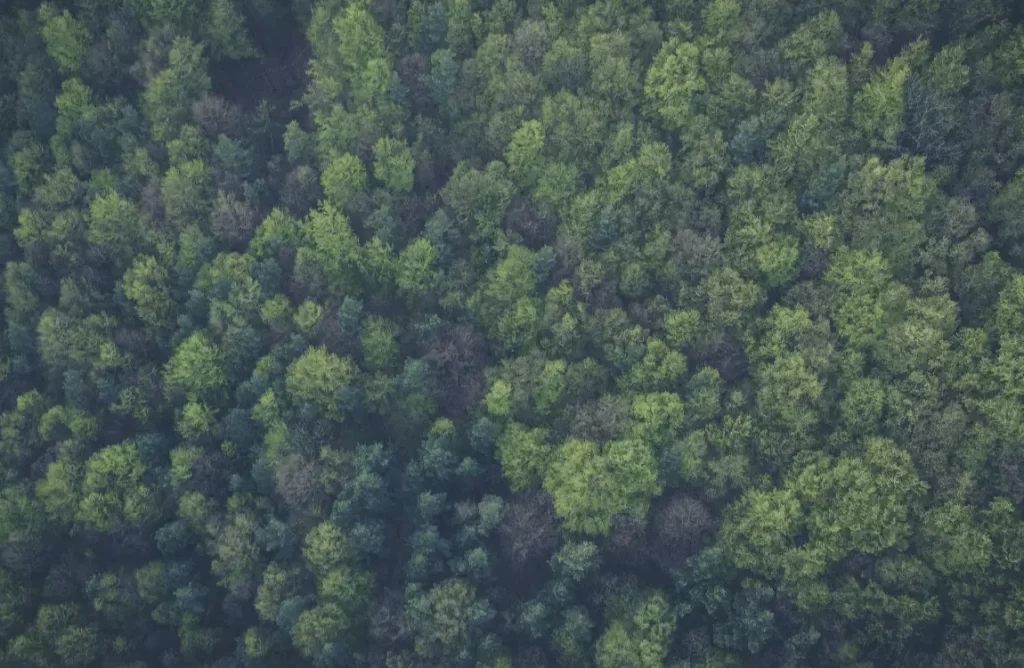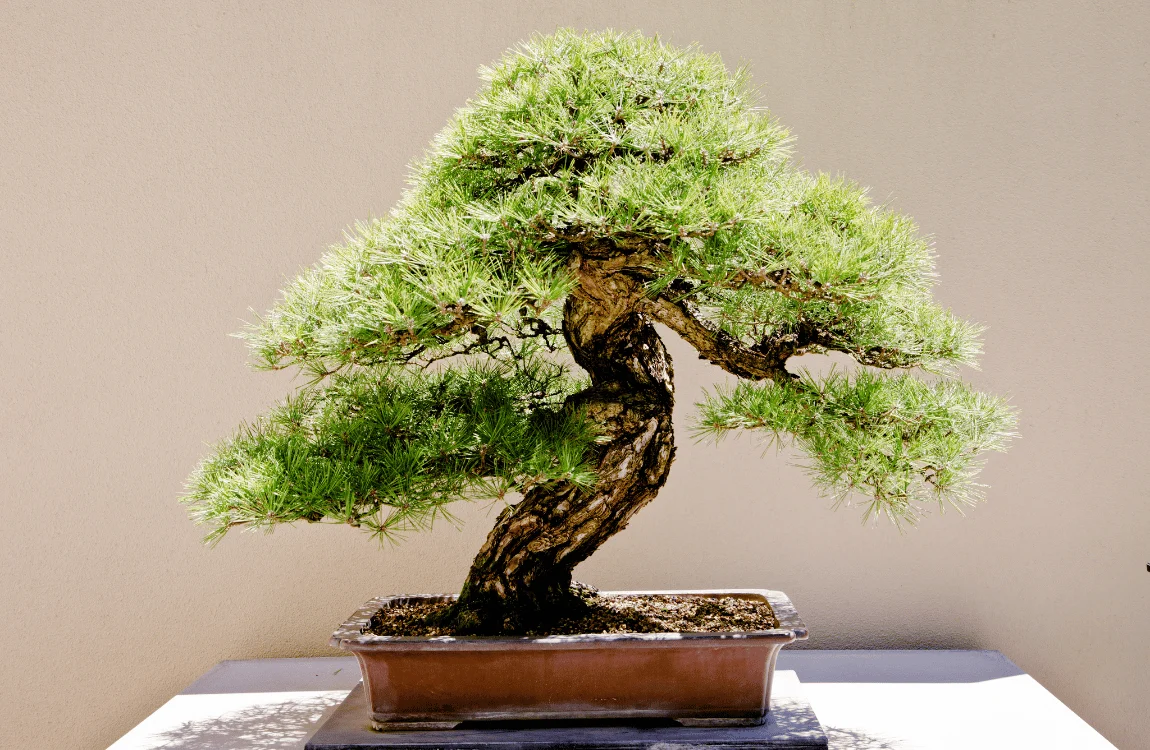Bonsai tree pruning shapes the tree and maintains its miniature size. It involves selective trimming of branches and roots.
Pruning a bonsai tree is essential for its aesthetic and health, much like shaping a piece of art while ensuring its vitality. This process is not just about cutting; it is about envisioning the future form of the bonsai while respecting its current growth patterns.
Beginners and experts alike approach bonsai pruning with careful consideration, using specialized tools to make precise cuts. The best time to prune depends on the tree species, with most requiring trimming during their active growth phases. Proper pruning technique keeps the bonsai tree in perfect health, enabling it to thrive in its container for years to come. Regular maintenance ensures that the tree’s size and shape reflect the artist’s vision and the beauty of this living art form.

Pruning Techniques
Bonsai trees captivate and intrigue with their miniature size yet profound beauty, representing nature’s grandeur on a diminutive scale. The art of bonsai primarily revolves around meticulous pruning techniques; these not only shape the tree but contribute to its health and longevity. Each cut has the potential to transform a bonsai, influencing the direction it grows, the shape it takes, and even its overall aesthetic appeal. Whether you’re a seasoned bonsai enthusiast or a fledgling grower, understanding the different pruning methods is crucial for the creation and maintenance of these living sculptures.
Structural Pruning
Structural pruning is foundational, setting the stage for a bonsai’s form and strength. This technique involves the removal of branches that compromise the tree’s structure, like those that are overly thick, compete with the trunk for dominance, or disrupt the desired balance. Perform structural pruning during the tree’s dormant period, typically in late winter, to encourage a vigorous springtime burst of growth. Take care to make precise, clean cuts to prevent damage and potential disease.
Maintenance Pruning
As opposed to structural pruning, maintenance pruning is about sustaining the tree’s shape and health. It involves trimming back new growth to refine the bonsai’s appearance and stimulate denser foliage. This ongoing process usually takes place during the growing season and requires regular observation to ensure the tree maintains its intended design yet doesn’t become overgrown.
Styling Pruning
Styling pruning, or pinching, is a delicate, artistic endeavor, shaping the bonsai’s branches to conform to a particular style or design vision. This method relies on manipulating the growth by pinching off new shoots or leaves with fingers or using bonsai scissors for precision. It’s a careful balance; excessive pinching can weaken a branch, so it’s important to understand the growth patterns of your specific type of bonsai.
Root Pruning
Root pruning is an oft-overlooked aspect yet is vital for the bonsai’s continued well-being. Conducted every few years, this technique involves removing the tree from its pot, trimming away a portion of the root mass, and then repotting it in fresh soil. This process encourages new feeder root growth, which helps in the absorption of nutrients and water, essential for the tree’s vitality. Ensure that after root pruning, the bonsai receives appropriate water, light, and nutrients to recover and thrive.

Pruning Tips And Guidelines
Bonsai tree pruning is a delicate art form that requires precision and understanding. Expert pruning not only shapes these miniature trees into visual masterpieces but also promotes healthy growth. Whether a novice or experienced bonsai enthusiast, mastering the following tips and guidelines can elevate the aesthetic grace and vitality of your bonsai.
Timing And Frequency
Timing is critical in bonsai pruning. Recognizing the right moment and frequency for pruning impacts both the tree’s appearance and its well-being. Here’s a quick guideline on when to wield the shears:
- Spring: Vigorous growth season – time for major structural pruning.
- Summer: Trim new growth to refine the tree’s shape.
- Autumn: Minimal pruning; prepare the tree for the dormant phase.
- Winter: Ideal for woody species to undergo structural pruning.
Proper Tools And Techniques
The right tools make all the difference in bonsai pruning. Utilize sharp shears and concave cutters for clean cuts that heal quickly and reduce scarring. Follow these steps for efficient pruning:
- Sanitize tools to prevent disease.
- Prune larger branches first, then proceed to smaller ones.
- Make cuts just above leaf nodes at a slight angle for better healing.
Understanding Bonsai Tree Growth Patterns
Growth patterns vary among bonsai, and understanding them is essential for successful pruning. Observe your bonsai’s natural tendencies, noting vigorous and weak growth areas. Focus on:
- Directing energy to weaker branches by pruning back the stronger ones.
- Maintaining the desired shape without disrupting the tree’s natural flow.
Balancing Aesthetics And Health
Creating a visually appealing bonsai without compromising its health is the true essence of the art. Balancing cutting for shape against the tree’s ability to photosynthesize and grow is key. Keep these factors in balance:
- Prune enough foliage to maintain shape but leave enough for energy production.
- Ensure that sunlight penetrates the canopy to reach inner leaves and branches.
Adapting Pruning Techniques To Different Bonsai Species
Not all bonsai respond to pruning in the same way. Every species has its unique characteristics, requiring tailored pruning approaches. Here’s a brief illustration:
| Species | Pruning Approach |
|---|---|
| Deciduous trees | Prune in late winter; focus on branch structure. |
| Conifers | Prune in late summer; pinch back new growth. |
| Tropical species | Prune during active growth; frequent trimming required. |

Frequently Asked Questions For Bonsai Tree Pruning
When Should A Bonsai Tree Be Pruned?
Prune bonsai trees during spring or early summer for optimal growth. Focus on maintenance trimming throughout the growing season to shape and manage foliage.
How Do You Trim A Bonsai Tree For Beginners?
Choose the appropriate season, typically spring or autumn. Identify the tree structure, focusing on its natural shape. Use sharp, clean tools to make precise cuts. Trim for size, shape, and foliage density. Always cut just above a leaf node or branch junction.
Can You Cut A Branch Off A Bonsai Tree?
Yes, you can cut a branch off a bonsai tree. Practice careful pruning to maintain its shape and health. Use sharp, sterilized tools to make clean cuts without damaging the plant. Always prune according to the specific bonsai species’ requirements.
What Happens If You Stop Pruning A Bonsai?
Stopping bonsai pruning leads to overgrowth, losing its miniature shape. Unpruned bonsai may suffer from a lack of sunlight and airflow within the foliage, potentially decreasing its overall health and aesthetic appeal.
Conclusion
Pruning your bonsai is both an art and a necessity. Mastering this skill ensures your miniature tree thrives, reflecting nature’s beauty in your space. Embrace the process, and remember to prune with patience and precision. Let your bonsai’s elegance be a testament to the care invested.
Happy trimming!




